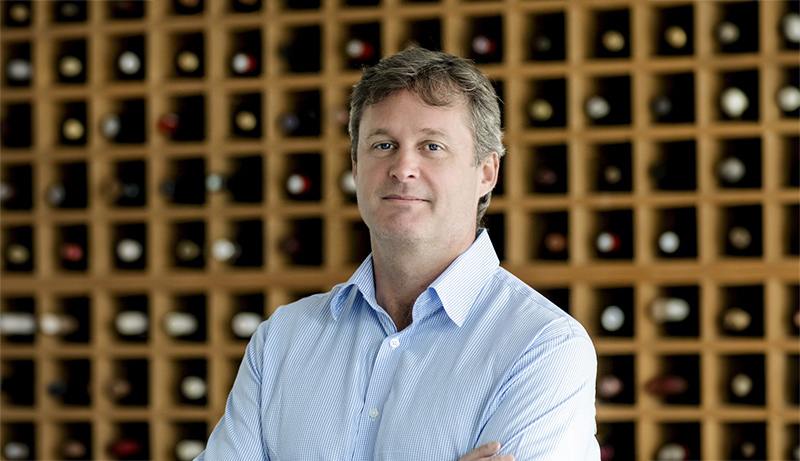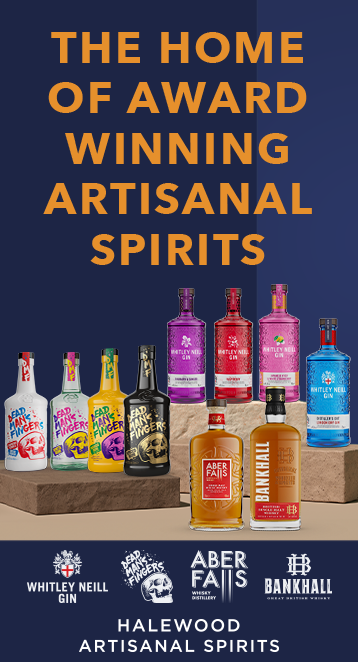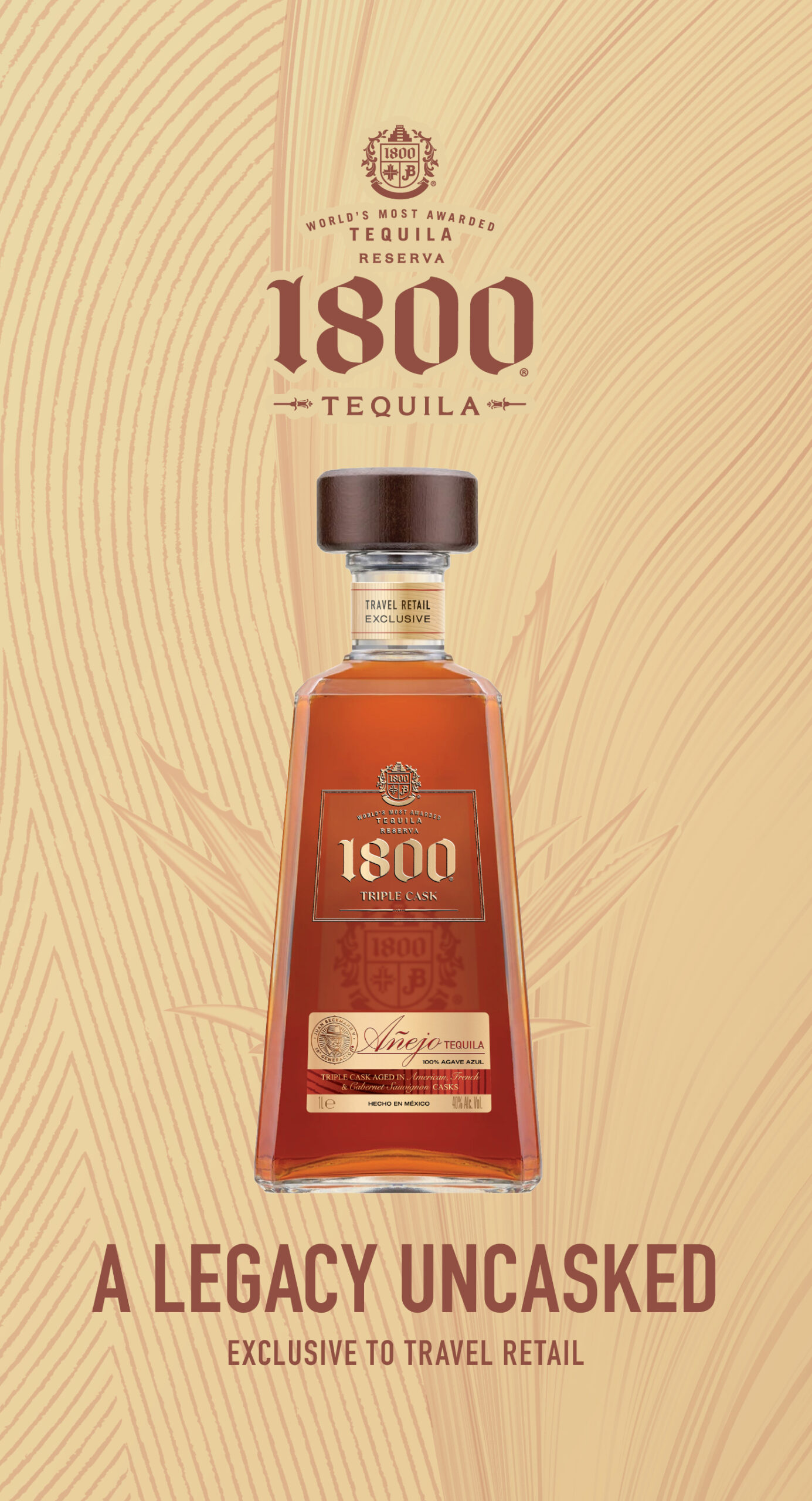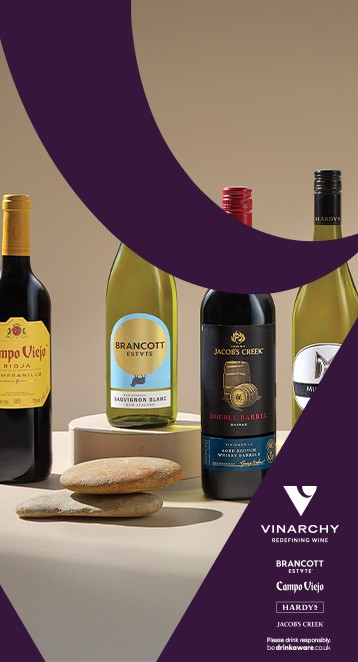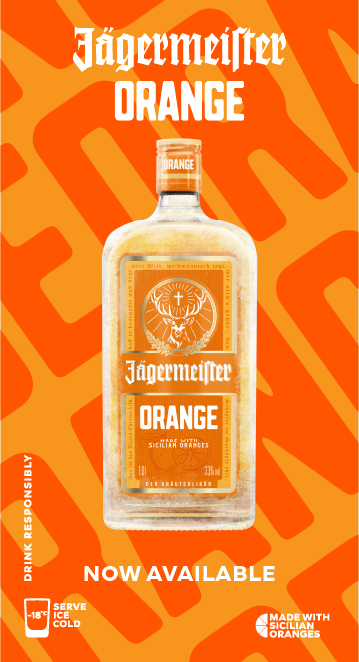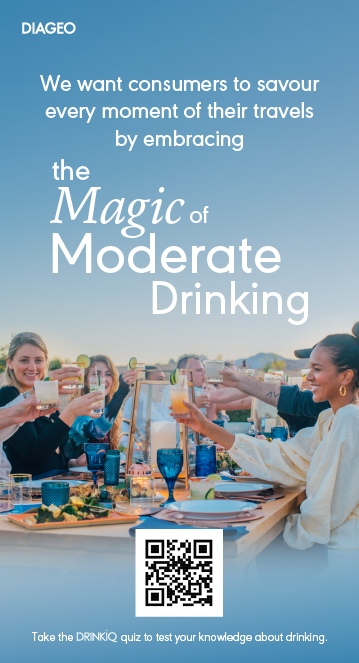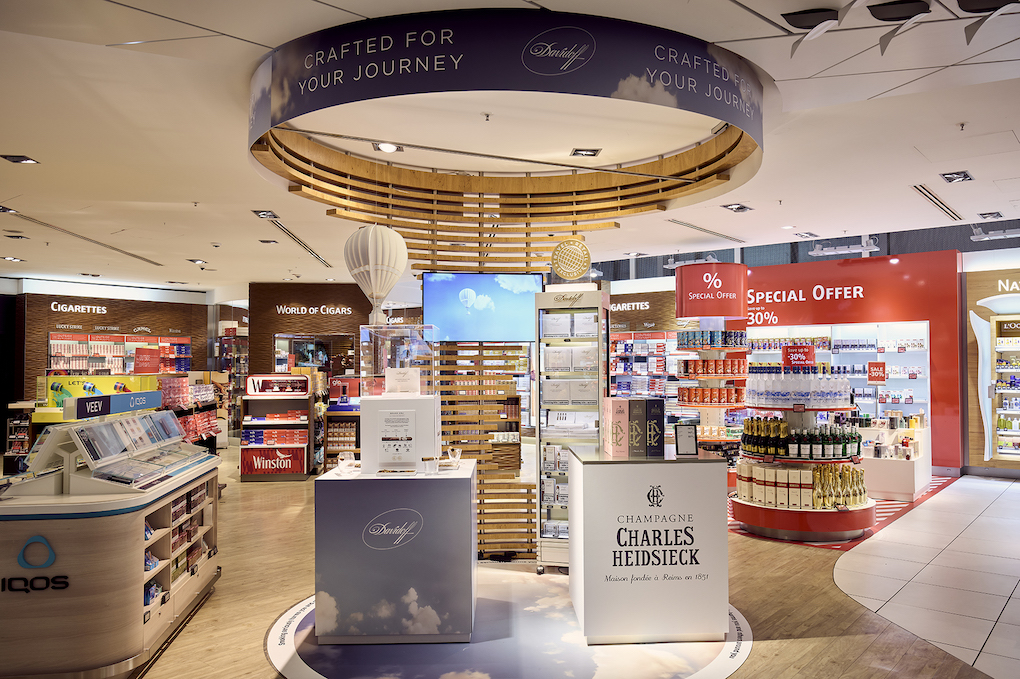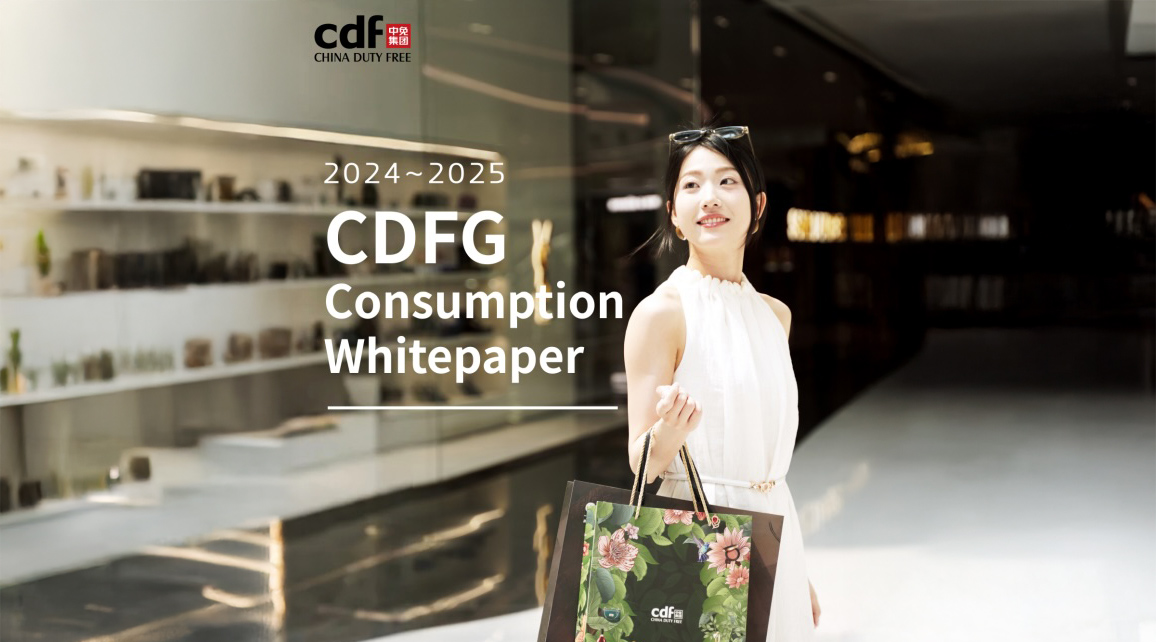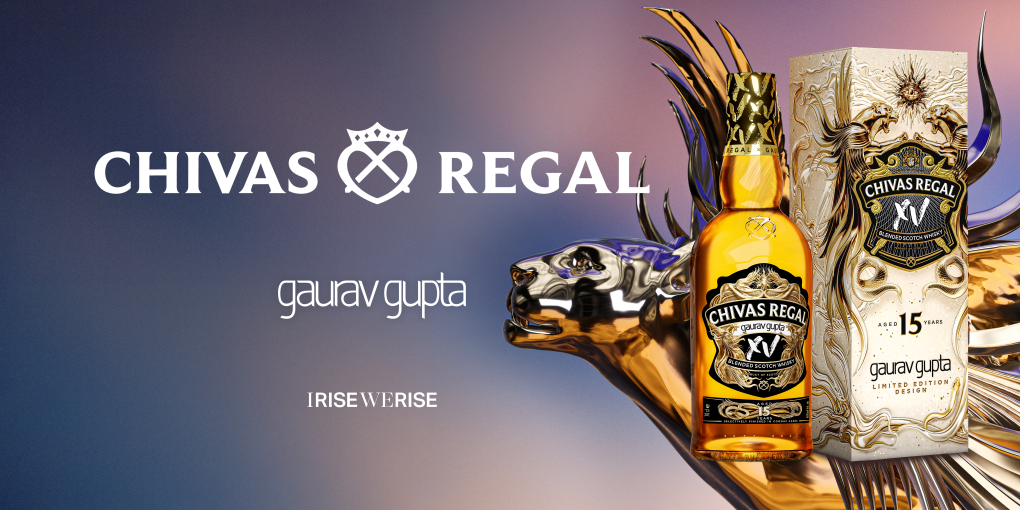Prologue: Oliver Dixon is Head of Fine Wine at Dubai spirits and wine distributor and retailer Maritime & Mercantile International (MMI), renowned in travel retail for its many travel retail supply contracts in the Gulf and beyond as well as for the acclaimed Le Clos stores at Dubai International Airport and extensive work in the airline field.
In this fascinating conversation with The Moodie Davitt Report Founder & Chairman Martin Moodie, Dixon describes his wine journey from an inquisitive teenager dispatched by his father to choose a wine from the family cellar to his role today as a champion of wine provenance and quality, including in what he sees as an underserved travel retail channel.
Many a wine journey starts with a single bottle. Think of the moment, the taste, the experience, perhaps the company, which sparked your own love affair with wine. For MMI Head of Fine Wine Olivier Dixon it was a 1986 Château Gruaud Larose, a great vintage for the well-regarded Second Growth Saint-Julien red.
He was just 25 at the time, and had barely started his wine career at Majestic Wine, when asked by his stepfather to pick a bottle from the family cellar to accompany the meal.
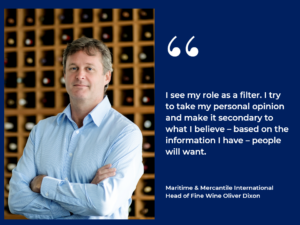
“I selected the wine, thinking it probably needed drinking up,” he recalls. Questioned by his father as to whether he really thought the wine had passed its peak, the young man confidently replied in the affirmative.
“But when we opened it, I realised I had completely misjudged it. It was absolutely phenomenal. All I could do was apologise, but he was very gracious about it. That experience, and maybe it was just the day or the setting, was brilliant.”
Dixon was hooked. From being a fledgling fan of real ale, he embarked instead on a personal and professional sojourn into the world of wine. Temporary work in the wine department of UK department store Selfridges helped him acquire knowledge, a foundation he decided to build on after deciding his first real job – working for a British textile firm in Dubai – was not for him.
“I knew I had to get back into something that drove my passion. So I went to work for Majestic Wine in the UK in 1999 and did a few different placements. I did the in-store training and completed the WSET [Wine & Spirit Education Trust] level three within six months of joining. Then I signed up straight away to do the diploma.
“I was really eager to gain as much knowledge as I could because I wanted to move beyond being an Assistant Manager in a retail shop. I didn’t see that as my career obviously, it was my starting place.”
But it was a valuable one. “I remember being on the tasting counter at Majestic and the buyers would buy parcels of interesting wines,” he remembers. “I bought a parcel of 1988 Margaux. I don’t remember the Château but when we opened up the wine, we thought it was brilliant. We started selling it left, right and centre. I fell in love with this wine.
“Then, about six to eight weeks after we got this parcel into our shop, I was at head office and participated in a blind tasting – the first I’d ever done.
“The man who was conducting the tasting went around the room asking people what they thought. Some guessed a Bordeaux or Burgundy. I said that it was that Château X from 1988.
“Yes, you’ve got it.”
And he had. In more ways than one. “I thought, ‘Right, I’ve got to get into wine buying. This is my game.”
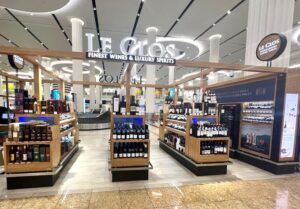
It wasn’t long before his wish was fulfilled. On a work trip to Bordeaux, Dixon met James Ryland, a former MMI wine manager (who had just become Export Manager for Bordeaux negociant and brand owner Calvet. Ryland said he would put Dixon in touch with MMI, a connection initially delayed by the beginning of the second Gulf War in 2001 but which came to fruition in 2002 via a job interview and a subsequent move back to Dubai.
“I was close to not getting the job based on my choice of restaurant in which to meet. Apparently wine professionals don’t do TGI Friday’s,” Dixon recalls. “He had a good point. I had chosen it because it was easy to find and avoided the Reading one-way system. I didn’t want him arriving stressed. A menu of nachos and burgers with a very basic and commercial wine list annoyed him all the same. I recovered a difficult start and never looked back.” He has been with MMI ever since, assuming his current role as Head of Fine Wine in 2010.
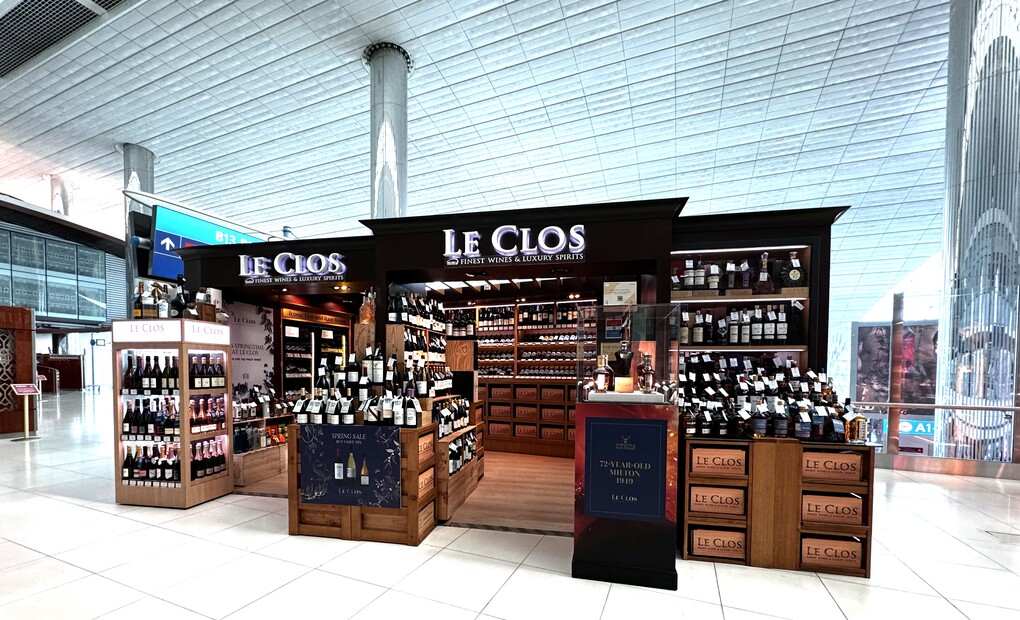
In the subsequent years, his olfactory and tasting skills have been further honed, helping to embellish MMI’s stellar reputation across the industry for buying and then offering wines of outstanding quality, diversity and interest. How much, I ask, do those skills owe to an innate talent as opposed to training?
“It’s maybe similar to football,” Dixon responds. “If you’ve got a really good left foot, it comes naturally. You become passionate about it because it’s so much easier. Looking around at my colleagues in wine, I could see others struggling with what I found quite easy.
“Some people just don’t have a good sense of smell so their senses aren’t very alert. There are studies that suggest women are better wine tasters than men because their senses are more in tune. I believe it’s an innate skill or quality. Then it’s something you just have to develop. The more effort you put into it, the better the results.”
Point scoring or pointless?
Was he ever tempted to become a wine writer? “No, I don’t think that’s really me. I prefer the commercial side,” Dixon replies. “Maybe later on in life I might have more patience for it. But I find it hard to start something. I’d be finally starting an article at three o’clock in the morning with a nine o’clock deadline.
“And then there’s the issue with points [notably the 100-points scoring system adopted by the likes of Parker, James Suckling, The Wine Spectator and others -Ed]. It became an obsession for some people and was taken way too far. Others might talk about wine scores, but to me it’s become somewhat irrelevant.

“I used to discuss scores a lot, and now I never find myself quoting them. With Parker [Robert, the legendary American wine critic] gone and multiple voices on the scene that don’t seem as relevant, scores don’t seem as critical to me.
“There’s also the issue of wines being fabricated to meet a certain style. I think at one stage many people weren’t making wines true to terroir, true to their identity. They were basically going into a lab and saying, ‘Make me something that will get 98+ points’.
“You’re talking about top vineyards making those wines. When you look at those wines, it is obvious they picked too late, they were pushed in the extraction early on, resulting in overly concentrated fruit bombs that ultimately just break down and don’t age.”
To the point, Dixon recalls a visit in 2016 to a renowned right bank Bordeaux property where he and the owner tasted the 2000 – considered a great vintage in the region. The wine had been awarded 100 points by one critics. Dixon wasn’t impressed. The owner then brought out a second bottle from 2001, supposedly a lesser vintage. “It was significantly better due to having more acidity. And I wasn’t alone in my judgment. Even the owner preferred it.”
Although he samples countless wines each year, Dixon is wary of mass tastings. “People are trying to assess a wine based on a single sip. That’s a very dangerous thing to do. Bottles are meant to be enjoyed over a couple of hours.
“I dislike attending huge tastings with 300 to 1,000 people, tasting wine over dinner. I find about 50% to 60% of the experience is lost due to the wrong ambience and tempo of the evening. It doesn’t stick with me and I don’t enjoy them, so I tend to avoid those events now.
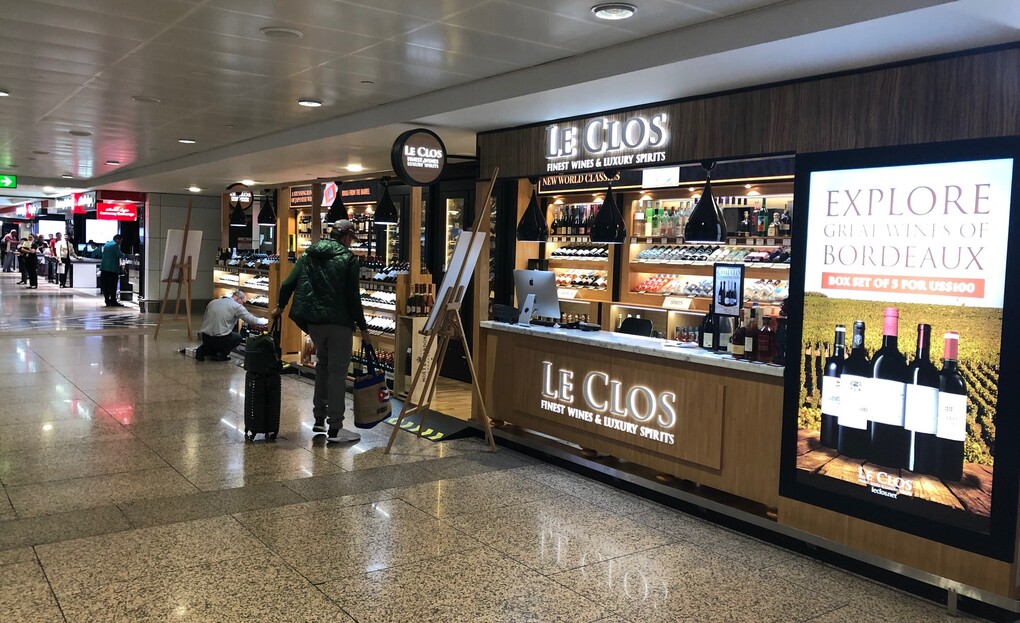
“I went to an interesting tasting in Bordeaux called organised by the Academie du Vin, where you could taste wines such as a 1983 Domaine de Chevalier, a 1923 Chateau Siran and a 1913 Chateau d’Yquem, which was quite fun. But again, it’s all sort of argy bargy bun fight with people elbowing their way, trying to get in and have a taste. You don’t really enjoy it.
“I went to an interesting tasting in Bordeaux organised by the Académie du Vin, where you could taste wines such as a 1983 Domaine de Chevalier, a 1923 Château Siran and a 1913 Château d’Yquem, which was quite fun. But again, it’s all an argy bargy bun fight with people elbowing their way to get in and have a taste. You don’t really enjoy it.
“Enjoyment comes from being in the right mindset and really savouring wine. That’s why you still remember that time, that lady, that meal or that setting that seemed perfect and was probably 50% of the experience.”
Dixon is, of course, not simply tasting wines for quality assessment. He is also weighing them up for commercial viability and factoring in the customer profile of, say, a Le Clos store, an airline or a restaurant. How does he approach that task?
“I see my role as a filter,” he responds. “I try to take my personal opinion and make it secondary to what I believe – based on the information I have – people will want.
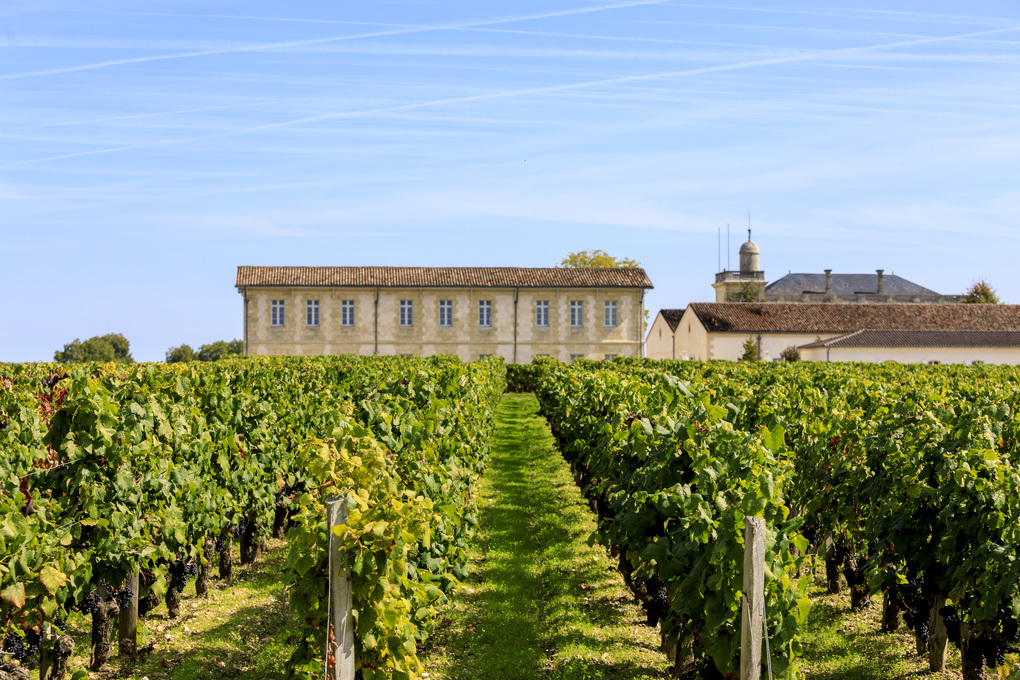
“Many buyers say, ‘I don’t like that wine. It’s not my style.’ But we’re not buying wine for ourselves; we’re trying to buy wines for an entire community, which can be quite diverse. It’s about identifying wines or wineries that fit into trends.
“In Burgundy, for example, trying to obtain enough allocations to meet demand across different tiers is challenging. You’ve got to offer a bit of everything to provide everyone with a choice.
“Different venues attract different types of consumers. For instance, at the golf club, where people tend to be quite wealthy, they very rarely sell expensive wine. Certain places attract fine wine buyers. They are not necessarily the ones with the Michelin stars, but places with a certain ambience which people feel are good spots for fine wine.
“The classic examples, like the best restaurants, are very consistent in terms of great people, teams and service. So they put you in that mood of wanting to spend more than you would elsewhere. Drinking wine in a good business class cabin is enjoyable. You get to relax and concentrate on the wine uninterrupted.”
Following and driving trends
Wine tastes and trends are a constantly evolving dynamic, Dixon says. And MMI has a role to play in responding to, anticipating and even driving trends.
“If something didn’t work five years ago, it might have been because we didn’t invest enough time in creating a market for it and helping people understand that style of wine. Returning to it five or six years later with a new generation of sommeliers who get it, then it might suddenly take off.
“Dubai has historically been behind the rest of the world, so we observe what’s happening elsewhere, like in New York or London. What we used to say about Dubai is that it’s a seven-hour flight from Europe, but trend-wise, it’s probably a seven-year journey.
“Now that gap is closing rapidly. Dubai is quickly becoming more of a trendsetter, especially regionally. In 10-15 years it will undoubtedly be so, probably because it’s moving so fast now with reforms on alcohol, accessibility and pricing.
“This has attracted more professionals. The current rate at which restaurants are opening is crazy. I was in Singapore this week, and many there talked about moving to Dubai to open up due to the slowdown in Singapore.”
Reach for the sky
Dixon buys for the whole MMI estate from local accounts to Le Clos and the important inflight pouring business, which includes Emirates, Etihad Airways, FlyDubai and Vistara.
When selecting for an airline (across all cabin classes), Dixon pays little credence to the oft-quoted theory that certain wines perform better at 36,000 feet than others.
Some “airline wine experts” contend that wines, say, with very firm tannins – including older, fine Bordeaux – don’t work in the sky and advise their clients to opt for earlier drinking vintages, he notes.
“However, I still find firm tannins in earlier drinking vintages of Bordeaux. Italian wines are really firm too. At Emirates, which has a cellar of six million bottles largely consisting of Bordeaux, much of which is for business class. We age it until it gets to a point where the tannins have melted, making the wine really enjoyable to drink.
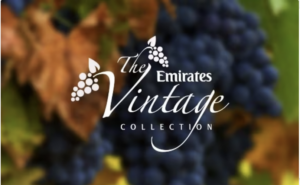
“I’m not an engineer so don’t ask me for data and figures but broadly an A380 has a cabin pressure equivalent to an alpine resort. So I challenge anyone to claim that when they go to a ski resort, they specifically look for light and low-tannin wines because anything else just doesn’t work.
“I think people are stuck on the idea of what was happening 20-30 years ago and haven’t moved with the technological and engineering advances of modern aviation. Cabin pressure is a significant factor, but the real barrier to enjoying wine onboard is yourself – your level of hydration and of tiredness.
“Fatigue comes easily when you travel; you get on a plane and fall asleep, something you wouldn’t normally do as soon as you get into the office.”
Dixon cites the example of a wine he drank on a recent Emirates flight to Singapore. It was a beauty, a 2011 Bordeaux that had been aged in France until full maturity. It was every bit as good in the sky as on the ground.
In pursuit of excellence
When it first appeared on the airport retail scene, Le Clos stood out like a beacon from the mediocrity of the wine proposition in many international airports.
The concept brought a new dimension, combining an expansive, eclectic offer with store environments deliberately designed to create an atmosphere of discovery, all underpinned by highly knowledgeable but courteous staff.
“I was involved quite early with the conceptual part and to us it was pretty logical,” Dixon remembers. “Looking at Dubai specifically, we weren’t able to service people buying wines in Dubai very easily due to the high local taxation.
“The fundamental issue with fine wine retailing in airports is the margin aspirations of the operators, driven by the contracts with the airports. To sell a wine at US$300, it’s taking up the same amount of space as a US$30 bottle. So logically, why do you need ten times the cash margin per unit to be profitable?”
“Le Clos offered an opportunity to get past that. We’d started buying and laying down Bordeaux wines in the early 2000s and bought significantly into the 2005 vintage, a new benchmark for the region at that time. We’ve been expanding the wine portfolio ever since. So when I took over this role in 2010, there was already the foundation of a fine wine portfolio that allowed us to really get into it.
“It was about breadth but also depth of range. Yes, we have got some, say, Château Margaux but we didn’t want to have just one vintage. We want to offer people many more experiences on different levels. Typically, if you go into a travel retail operation, they might have one vintage, but it’s good to have that in a magnum and, say, ten vintages, and even have double magnums and six-case offers.
“We don’t just supply our own retail shops. We help other regional travel retailers with their fine wine ranges because we have stock and access to the best producers. In fact our supply businesss is much bigger than Le Clos itself.”
Sometimes MMI briefly releases wines of notable interest before retiring them back to the cellar and waiting for them to fully mature, when the market is clean of stock. “That is really exciting for wine lovers,” Dixon says.
“We manage that whole ageing process, which, as it gets bigger, becomes a very expensive operation, as I have been reminded of recently. You have to appreciate just how much capital goes into making a world-class fine wine range and bringing it to people.”
The critical human factor
If you are going to offer great wines, it is crucial to have staff and managers with a proper understanding of them, Dixon emphasises. “You might get that on the phone with your account manager at your London wine merchant, but not at one o’clock in the morning in the first class lounge or the business class lounge. That was the rare bit about what we did.
“When a winemaker produces wine at the level which we retail, we need to bring people into the office for training. This includes everyone, all the way up from the stores. It’s been a crucial part of our story. People like me get to travel to the wineries, but the staff are out there doing the hard yards on the floor, 12-hour shifts, four days a week.
“Getting them to experience this training has been very important, so much so that we have now revamped our entire academies. We’ve got two full-time trainers just for wine plus two spirits trainers.
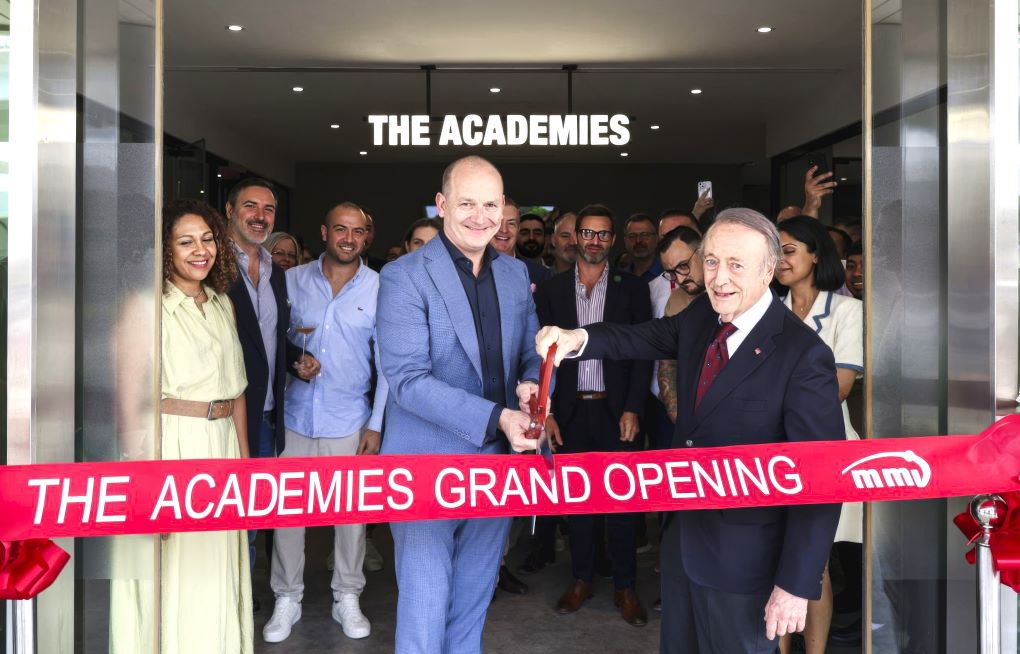
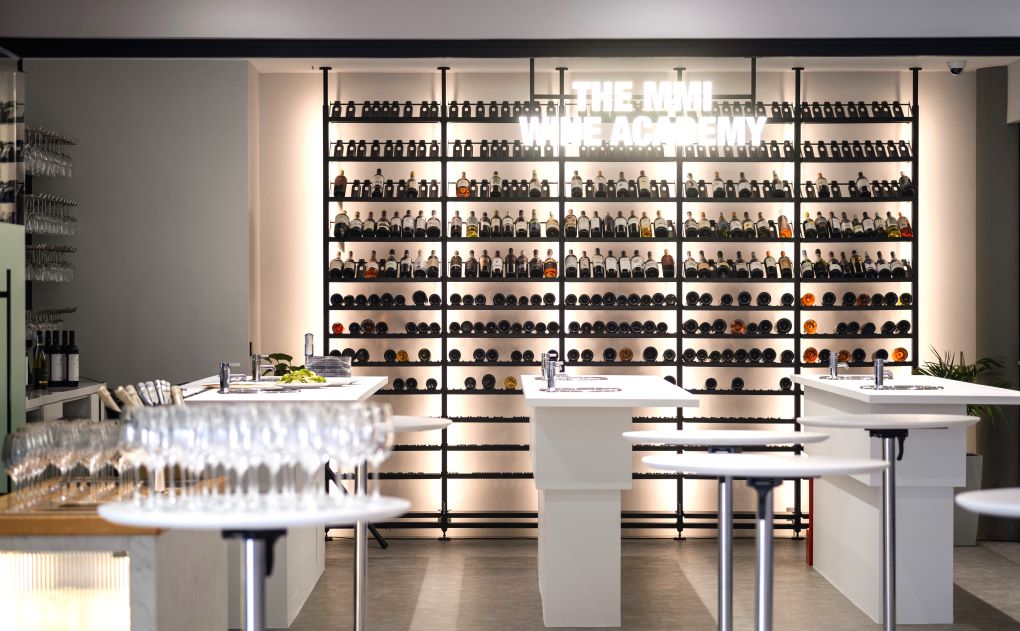
“We’ve got three rooms dedicated to training full-time, so we can train internal staff and external customers as well. This will drive our culture forward; it will be more structured. It won’t just be the winemaker imparting knowledge; it will be us trying to elevate everyone at every touch point.
“If you’re at level one, we’ll take you to level two, then to three. And three involves a lot of independent study, up to six months, covering winemaking, the chemistry behind it, the biology, a deep dive into the best-known world regions, even the commercialisation of wine. This will help us stay ahead.”
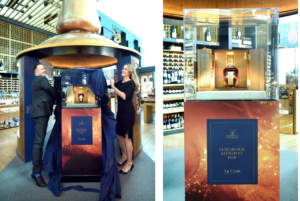
Is MMI’s ambition in travel retail to take the Le Clos concept and populate other parts of the airport world? “If we can find the right commercial terms,” Dixon replies. Not easy, of course, especially as invariably there are generic wines & spirits retailers in place working on traditionally onerous concession terms.
“That’s the beauty of Dubai Airport; it’s much easier to work with on that [concession fee] level. But, yes, we will find places. And if we can’t do it through travel retail, then we’ll try to do it through other channels.
“I believe that with your standardised, say, 45% concession fee, no operator will ever appeal to consumers with a range of fine wines which those consumers can access through merchants for a fraction of the price.

“The fundamental issue with fine wine retailing in airports is the margin aspirations of the operators, driven by the contracts with the airports. To sell a wine at US$300, it’s taking up the same amount of space as a US$30 bottle.
“So logically, why do you need ten times the cash margin per unit to be profitable? If a wine is overpriced it will sit on the shelf and leave a bad impression of the retailer value proposition with the shopper.
“In the fine wine market, margins are quite low, typically 15% for Bordeaux. Applying a margin of 65% is going to make the retailer look very expensive, and there is not the available margin for the supply chain to offer to the operator, like there is with spirits.
“Customers will pay more for convenience but they are not going to pay a two to three times multiple for the same product, same vintage. The basic premise of travel retail, or duty free as it was known, is delivering savings. While that need not be the case anymore, it [pricing] needs to be in line.
“To be successful in this space, we need to move to a cash margin model. And if you look at it logically, everyone has to play a part to help the concessionaire put it on the shelf at a price that the consumer is going to say, ‘Okay, it might be a bit more expensive due to it being airport retail, but it’s convenient.’
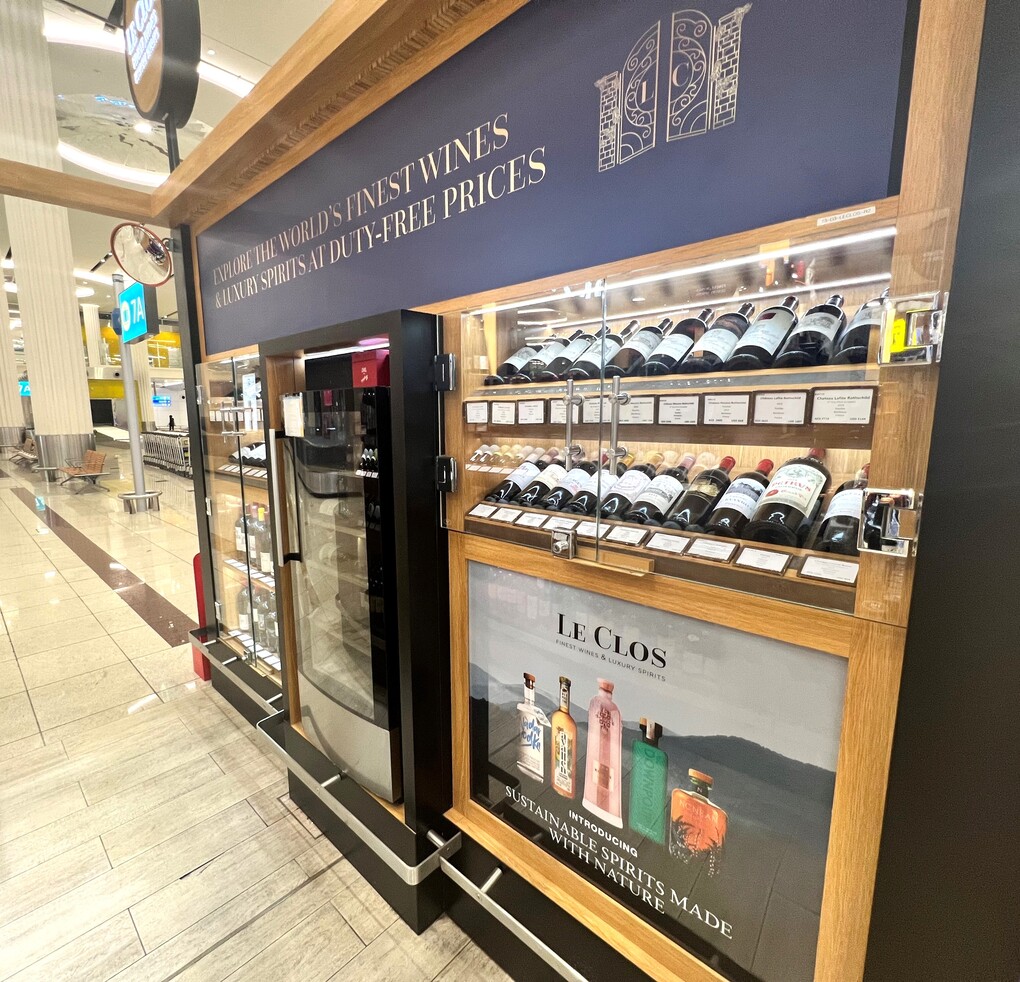
The situation is very different from spirits where producers tend to have greater built-in margin elasticity for travel retail due to high per-litre duty in many markets, and see the channel partly as a form of marketing. “Wineries simply don’t have those margins,” Dixon observes.
Our conversation moves to how even fine wine is often poorly presented in travel retail. The sight of first growth Bordeaux standing up on shelves is hardly likely to give any knowledgeable consumer confidence about the wine’s condition or perhaps even its provenance, I suggest.
“When you see a bottle of wine on an airport shelf, it’s usually standing up, and you don’t know how long it’s been there,” Dixon concurs. “Temperature and light are big ageing factors on wine. Combining those over a period accelerates aging.
“The in-bond model, mastered in London, is perfect, as long as everyone in the chain respects the wine conditions. For airports, it’s about shipping in reefer containers, storing in a temperature controlled warehouse, moving in a chilled truck for as short a time as possible, and then pushing it into a wine fridge.
“If this is all followed it can work well. You get some very nice display fridges now, like those from EuroCave, the French company, with beautiful, rich yellow lights that don’t emit UV and damage the wine quality.
“When I see a top bottle of wine standing on the shelf, it is clear that the culture of wine is missing in the team, meaning fine wines may have been transported with other less sensitive items not temperature controlled, and I worry that 20% to 30% of the magic of that bottle might already be lost.”
Explaining the importance of provenance and the integrity of the supply chain process for fine wine is crucial for any travel retailer serious about the sector, Dixon says.
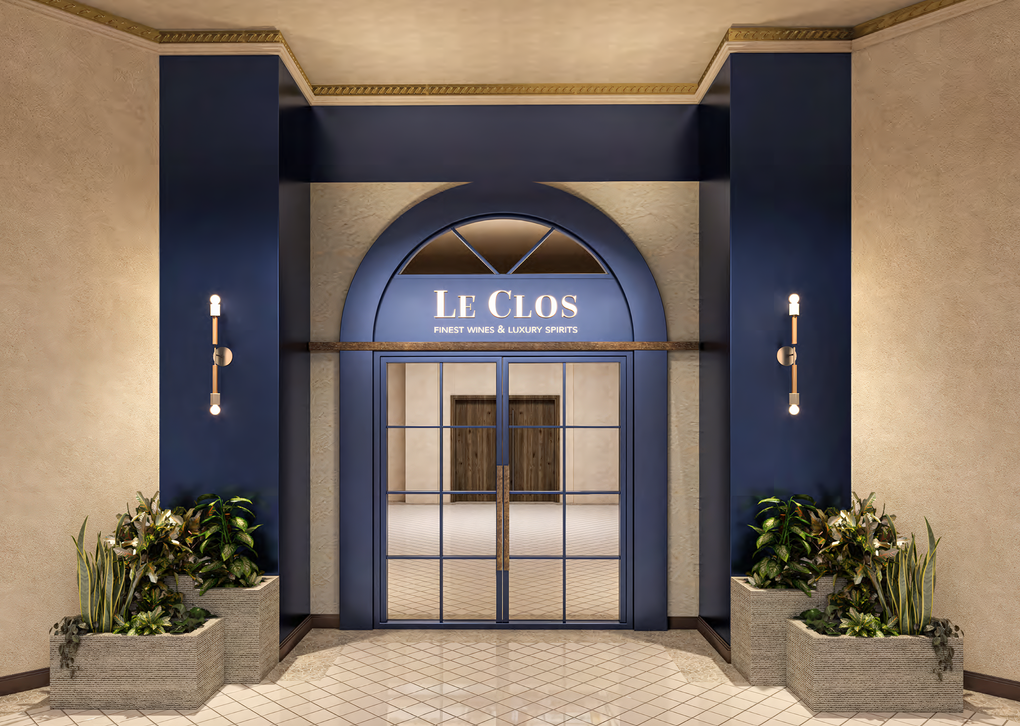
“One of Le Clos’ strengths is knowing how to care for product and when to make it available for sale to delight customers. For example, that the 2005 Pichon Longueville Comtesse de Lalande on the shelf was bought [by us] in 2006; has been lying in a cellar in France since; and hasn’t moved. I tried it yesterday in Singapore and thought it was fantastic and still in perfect condition.
“That’s because we ensure it goes through that careful journey. You pay extra for the transport, but it’ s worth it because customers get more pleasure out of drinking the wines.”
As a fascinating conversation draws to a close, I fire off some of my favourite wine questions. His most memorable wine experience?
“I think expectation plays a big part,” Dixon replies. “I was heading to the unveiling of a new wine from Pauillac from a fifth growth property. I wasn’t sure what to expect but it was unbelievable. It started off with brilliant Champagne, Pol Roger 2002 in magnum. Then we sat down to what was more like a tasting with dinner. We tasted every decade back to the 1880s. It was an experience never repeated and absolutely perfect.”
New world versus old world? “I find more interest in the old world because the regions are so much more established and exploited by great producers. There are some absolute gems out there that really achieve tension and balance, and take you to the next level of wine experience.
“It’s harder to find them in the new world. There are lots of fine wines in Australia and some beautiful Napa cabernets. But more rarely do you go, ‘Oh, this is amazing’ because in warmer climates, it’s more difficult to achieve the tension and find wines that evolve with ageing in the same way the great wines of Bordeaux and Burgundy do.”
Where next in the wine journey for Dixon and Le Clos?
“It’s about the expansion of Le Clos,” he explains. “We’ve got a really good model. We’re working now to put all the brand identity and guidelines, so that we as a team can take Le Clos overseas. We just launched Clos Emirates Hills, our first retail store outside the airport. This offers convenience to our Dubai-based customers. In the coming weeks we will start deliveries.
“We are also looking for other airlines that need help to formulate their wine programme and talk to their consumers about wines – because there aren’t many who have the in-house expertise or confidence level to do that.
“Wine is such a large part of the experience if pitched correctly. There has to be more than just looking at a cost line and wanting to reduce it every year. Creating experiences adds value and creates loyalty. That can’t usually be achieved at the lowest possible price. There’s lots of work to be done there to help achieve the right balance.”
And lots of wine to be tasted, bought, nurtured, sold and appreciated. It’s been quite some journey for Oliver Dixon. The world of airport and airline wine has a lot to thank that 1986 Château Gruaud Larose for. ✈






